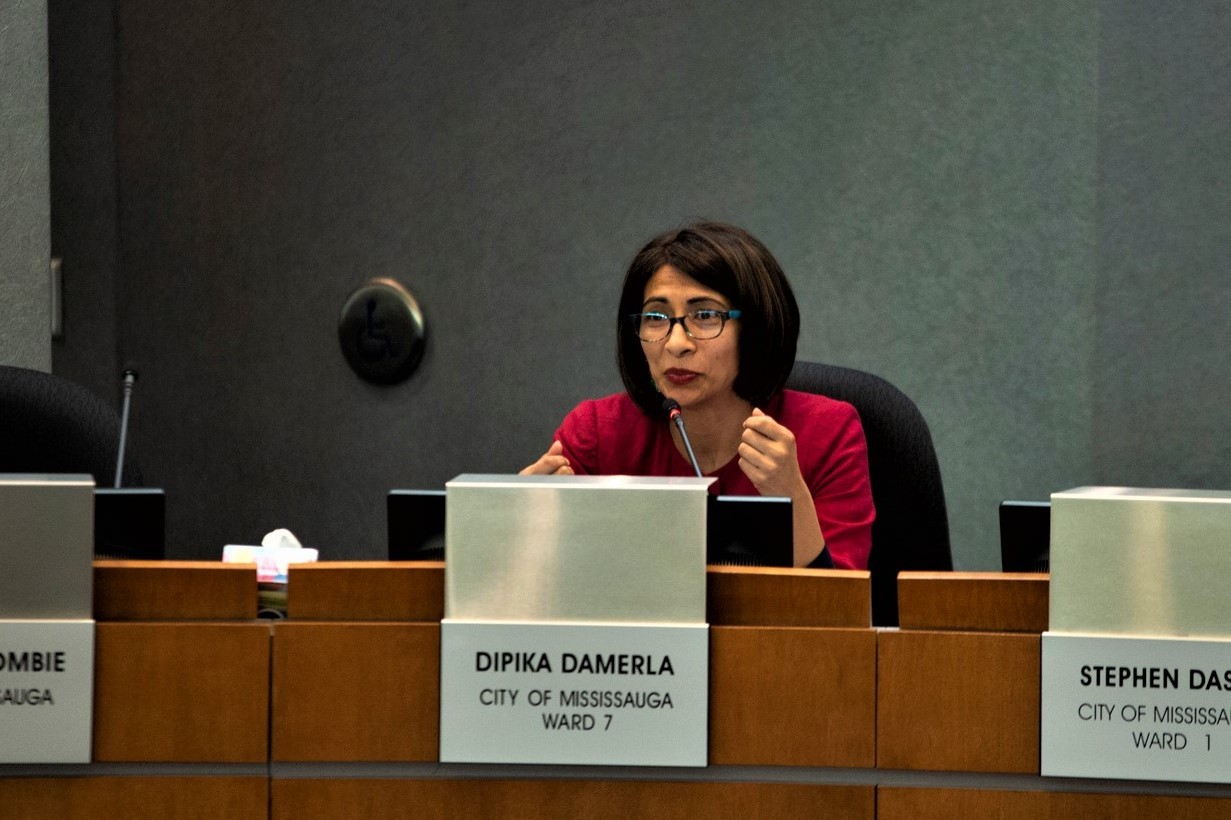
It’s budget season and career politicians want your vote
Ben Franklin said there are two certainties in life: taxes and death.
Some think too much of the former often leads to a rapid onset of the other.
At the municipal level, it’s quite the opposite.
Taxes are the lifeblood of a municipality.
If not enough are collected, this can stymie growth, impact on the delivery of services, and lead to a city’s ultimate deterioration.
If this is true, and The Pointer thinks it is, then Mississauga and Brampton and the Region of Peel are at the fiscal crossroads.
We are in the midst of the 2020 budget process. Staff have conducted a deep dive into the problems that have infected these three municipal entities in the present and will dramatically impact on their future.
It’s a rather telling overview that Mississauga has recommended a blunt fix: a 4.9 percent bump in the city’s share of the property tax bill. That number includes in it a 2 percent levy which, it is hoped, will bite into the rapidly climbing capital infrastructure shortage and rising debt levels.
To further elucidate this rising fiscal crisis (yes, we are not shy about using that descriptor), both cities have to live with the history of absent leadership.
As a new era dawns, the current crop of decision makers in Brampton and Mississauga can choose to carry on the failed legacy of their predecessors, those career politicians who used cozy relationships with developers to keep taxes artificially low while consigning the future to a harsh reality of a city-structure that isn’t affordable. Or, they can adopt a new way forward, one that will make them less popular with property owners and those who have fed off of the public trough in these two cities for far too long.
During the long 36-year reign of Hazel McCallion (1978-2014), Mississauga taxpayers were the envy of the province because the mayor insisted on NO tax increases for much of her reign. With the city coffers engorged by development fees from a massive greenfield expansion, her popularity was enhanced into super-star status, and her re-election by huge pluralities continued over 12 straight campaigns, which turned into laugh-ins. It seems clear in retrospect, that those short-term political gains to her gilded reputation as tax-friendly crusader, led in a perfect line to long-term pain for what is now the sixth largest city in Canada.
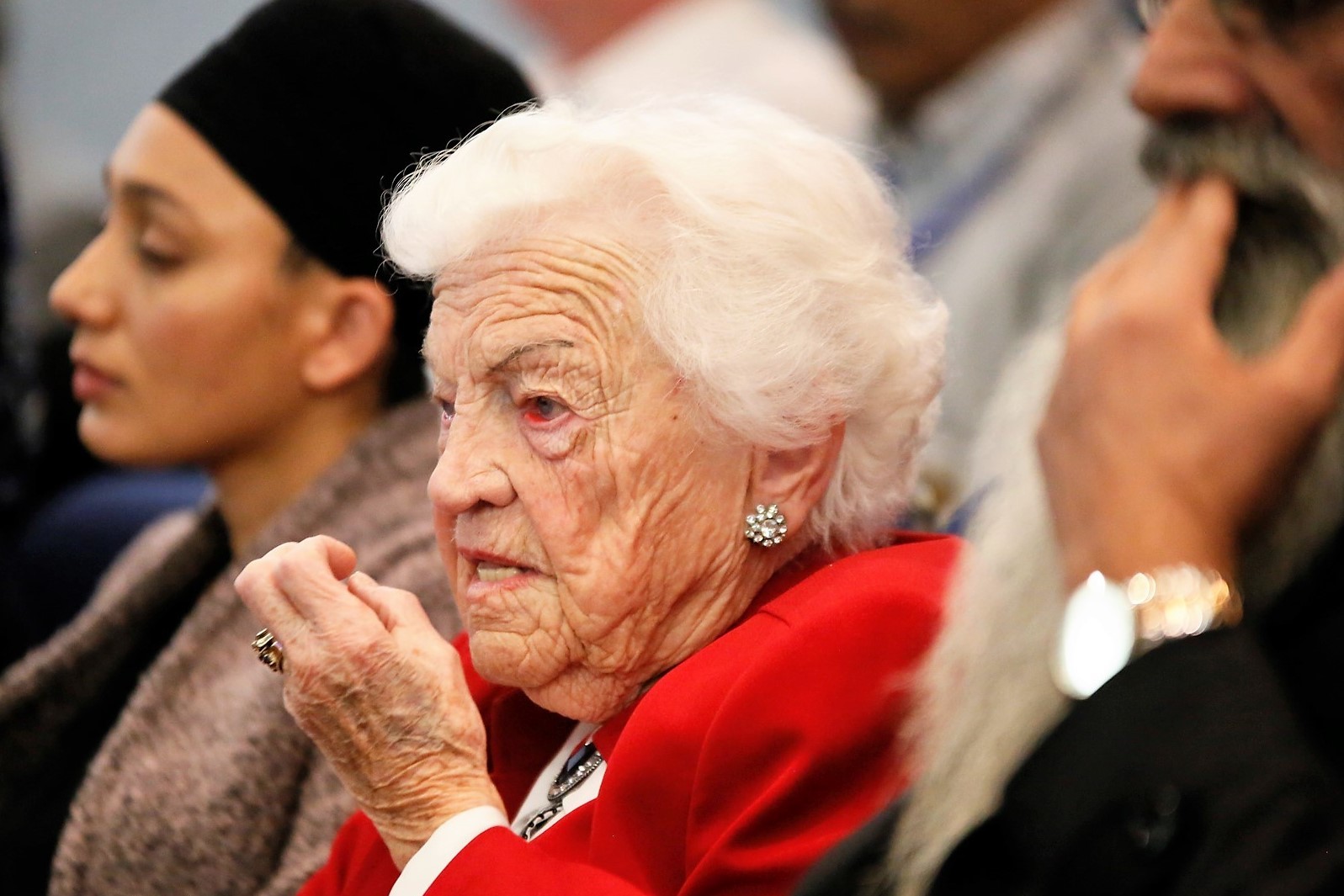
In the pre-2013 world, Mississauga was debt free. In the post-McCallion era, the infrastructure gap grew to $60 million. It is now $274 million, according to staff numbers. And (brace for it) forecasted debt will hit $309 million by 2029.
There are some modifiers to the city’s proposed tax hike. The province’s two-decade freeze on the education portion of the tax bill, and the hysterical (or pathetic) approach to the Region of Peel portion, kept irresponsibly low by shameless politicians such as Dipika Damerla, will create a blended bill palatable to the paying public. But that might also change if the utility rate on services from the region climbs, like it did by 6.5 percent in 2018.
If voters get confused by all this new math, it’s easy to remember this: the halcyon days of no tax increases, are over for now, and seemingly long into the future.
Even if Damerla tries her best to show her constituents how thoughtful she is, the ire-inducing action of the rookie councillor to cap the regional tax increase for 2020 at 1.5 percent, is far, far beyond irresponsible. Without even contemplating the budget, she wants it kept below a certain level. Why? Maybe to help her win back the provincial seat in Queen’s Park which the voters, tired of spendthrift Liberals, took away from her last year. In two years, being able to show them how hard Damerla worked to keep their property taxes down, during her accidental stop as a city councillor, might help her regain the cushy office – complete with an entire staff of minions at her beck and call – she was forced to vacate after the culling of provincial Liberals.
Damerla’s voice (and even her presence) in the meantime, has been hard to locate around either of the council tables she is supposed to participate at. Issues such as public health funding, poor transit and the growing affordable housing crisis seem to escape her radar. But when it came time to make sure such trifling concerns won’t diminish her chances for future re-election, she was quick to pounce.
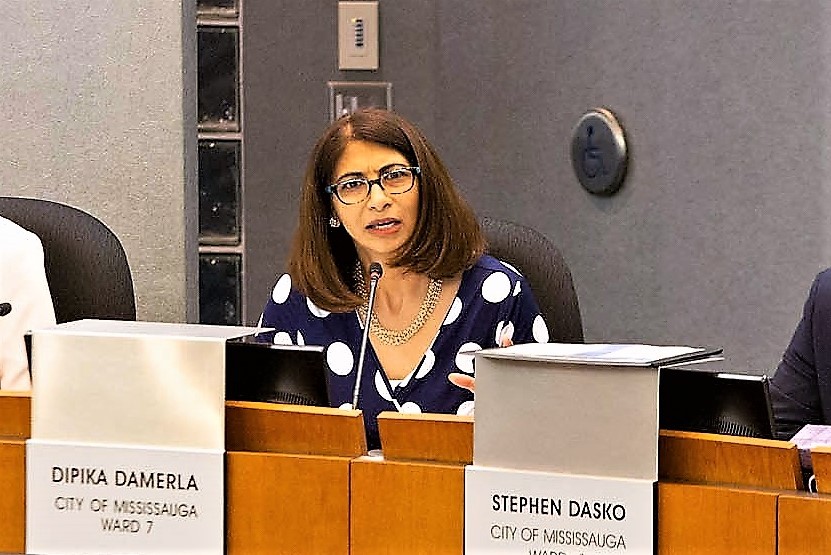
No, she doesn’t care about funding affordable housing, especially if doing the responsible thing might hurt her chances for provincial redemption.
While the regional tax increase is kept down solely for optics, a purely-political move so glaringly lacking any skill or even the air of financial prioritizing, that Damerla openly brought forward her motion to cap the increase without ever indicating she has looked at the budget or carefully considered the needs of residents.
This while Doug Ford has said from day one of his four-year mandate that the downloading of further costs onto municipalities, for everything from public health to childcare, will become a reality and his recent olive branch will not be extended for long.
And while Ford was adding even more onto the over-burdened shoulders of municipalities, what was Brampton Mayor Patrick Brown doing? Pulling a Damerla before she even began to warm her unwanted council chair in Mississauga.
The populist new mayor was making good on his campaign promise to freeze the city’s taxes for the first year while he was at the helm. In a city that doesn’t have two nickels to rub together, where patients are literally being stacked up in hospital hallways and his own LRT plan, which could cost $1.7 billion, doesn’t have a dime of funding, Brown jumped on the Hazel train to stardom.
No new taxes, he bellowed.
While the city ignores the setting aside of funds for a new hospital, usually a provincial pre-condition to green light a new project, and while the responsible move to set aside money for a city-share of transit expansion was also no match for Brown’s march to glory, the latest tax-killing crusader to become the hero of the people, those same residents will be the ones suffering in overcrowded healthcare facilities and gridlocked roadways because the city failed to do the responsible thing.
That doesn’t have to mean unreasonable tax increases. In 2015 Brampton hired former Ontario auditor general Jim McCarter to look at the books to figure out why the city’s finances looked so bleak. What was the main reason? Excessive labour costs inside City Hall preventing money from going to things like a new hospital or an LRT system or affordable housing incentives.
McCarter found that 96 percent of growth-related revenue gains in the mushrooming city, were going directly to pay for municipal staffing costs. That staggering number, he warned, was so far beyond sustainable and would continue to cripple the city.
But Brown’s own third-party review of city departments found no such problem. Move along, staff who were consulted in the process said, nothing to see here. No need to upset their decades-long feast at the expense of taxpayers.
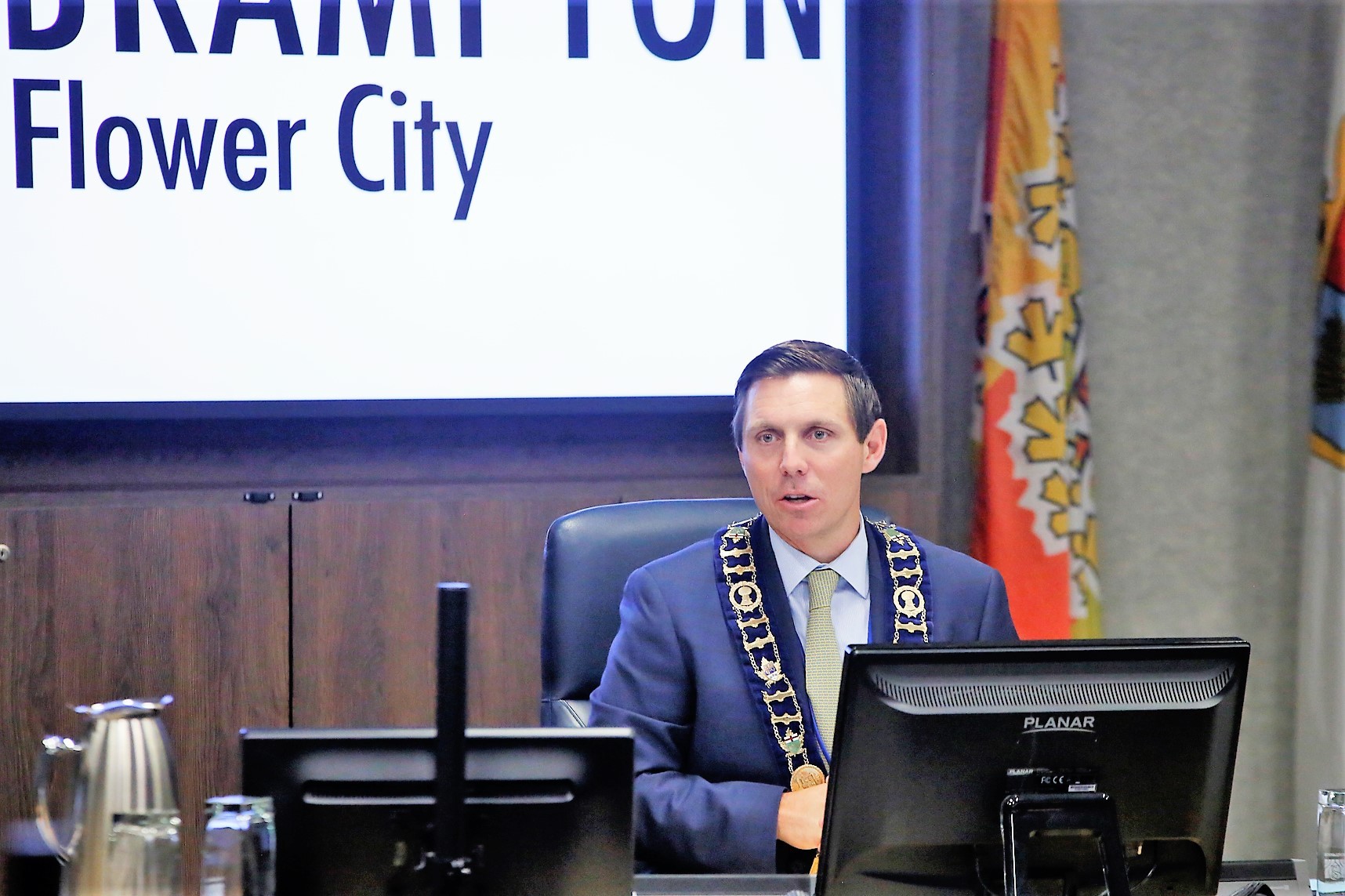
And so it continues.
Just like the problems. While downtown merchants raise concern about increasing homelessness and the attendant problems, the city keeps ignoring them. Brown’s tax freeze, also freezes any ability to address homelessness, incentivize more affordable housing units and it even guarantees that the illegal basement-apartment dilemma across the city will continue.
But of course, Brown, just like Damerla, only cares about his popularity. Keep taxes low, keep my approval ratings high and pray people don’t notice Brampton failing around them – at least for the time being, until the former Ontario PC leader looks to build on his growing local popularity to regain his lost glory.
But what will he really gain if the city that gave him redemption doesn’t actually get much in return?
In late May of this year, Ontario’s municipalities said they will be forced to raise taxes or cut services due to provincial government cuts that will likely equal well over half a billion dollars in lost annual funding and foregone revenue.
“We’ve come up with a conclusion that we’re going to work together,” Ford told the public and press. “We’re going to maintain the funding throughout this year. Every mayor I talked to said they can find savings. So, that’s good news. But they said they needed more runway.”
The bottom line for municipalities is that the province has carte blanche to do whatever it wants under the powers of The Municipal Act.
The issue of placing too much of a tax burden on property owners is real. With all the downloading, on top of previous costs, for example, affordable housing which was passed over to municipalities in the ‘90s, has made it clear that cities desperately need expanded revenue tools.
Mississauga has a clear and present problem, says staff, and that’s the city-portion of the money needed to pay for roadways. That number checks in at 5,666 kilometres across the city. The need to upkeep or build anew is a priority. This makes up 28 percent of the $9.9 billion tab for infrastructure. In fact, all transportation assets eat up $4.7 billion of the nearly $10 billion in total infrastructure owned by the city to keep it functioning at present levels. More chilling: 52 percent of the infrastructure now on the books is 30 years or older. This is the spill-off effect from the city’s age of expansion that made it one of the poster boys for suburban sprawl during the McCallion era.
The staff’s 800-plus page draft budget isn’t a horror novel, but it does show that $1.5 billion of previously approved projects that were supposed to play a huge part in its Master Plan will remain unfunded because of this rising tide of fiscal worries. Those heady ‘Smart City’ initiatives, a ‘Transportation Master Plan,’ and a ‘Climate Change Master Plan’ will go in search of funding that simply isn’t there.
Like Brampton, Mississauga does not have much of a rainy-day fund. When the province unilaterally axed the $200 million downtown LRT loop, which McCallion had forced onto the plan, the city had no back-up. There was no contingency fund. Likewise, if future growth creates demand for a brand new hospital, there is no money being set aside for the city’s required share. It’s the same for every major piece of infrastructure that a booming city, with exhilarating aspirations, will need. There’s no money.
Developers might cover some of what their future projects require, but that pie is shrinking. The existing assets are in need of renewal. Hazel’s largesse to the voters who created her status has turned into a gift that no longer gives and a growing infrastructure gap set to reach $1.5 billion.
More projects the city needs but cannot afford get added to the “unfunded” list, like the leaking roof or broken furnace you can’t afford for your house, after decades of refusing to earn more money on the job, despite a thing called inflation.
More facts to ponder. Most of Mississauga’s and Brampton’s funding comes from property taxes. Other sources include user fees, development charges (capital budget only), grants and subsidies from other levels of government (restrictions apply), investment income (not much money left in those reserve accounts) and contributions from those same dwindling reserves. And remember: the municipalities only get a 10 percent slice of the overall tax pie. They are wholly dependent on the handouts of the province and the federal government to help them fund massive capital projects like LRTs or hospitals. And those two levels clearly don’t care that Peel taxpayers contribute their fair share to federal and provincial coffers.
After returning a pathetic 1.5 percent of fair-share infrastructure investment (this is an estimated figure and is based on what Brampton and Mississauga are entitled to based on per capita funding from 2015 to 2026) to the two cities since their election, all eleven Liberal MPs were returned to office. That sends a clear message: keep ignoring us and it’s okay, we will still keep electing you.
If the cities can’t raise money to chip in to help these kinds of builds (like what happened with Vaughan’s new subway or Oakville’s new hospital), then it puts them in a tough position when it comes to keeping up with its fellow communities.
There are examples of funding formulas in place around the world to finance capital projects. In cities like New York and Philadelphia, they have the ability to issue income taxes. In Stockholm, for example, this municipal income tax fuels its drive to build major projects that impact on local residents.
Charter City status, which Toronto is now agitating for, would not only open up new revenue streams, it could create guaranteed, sustainable funding from senior governments for things like autism treatment, childcare and affordable housing.
The last item is one The Pointer will be heavily scrutinizing during the budget season. Will the Region of Peel continue claiming it has a housing plan, the Home For All initiative, to bring online 75,000 affordable units by 2028? Or will it admit, through its budget position, that there simply is not enough money to fulfill its own plan? So far, almost two years into that commitment to bring on 7,500 units a year, for ten years, it has met about 1 percent of its target?
And with hapless leaders like Damerla demanding a 1.5 percent tax increase cap at the region, it’s clear she and others who follow along, do not consider affordable housing enough of a priority to bite the tax bullet and properly fund it.
This short-sighted thinking, that property-tax payers should not shoulder such a burden, fails to understand how many social factors are connected. The lack of affordable housing eventually leads to an entire wave of costs, related to public health, the spillover of increased crime, the loss of revenue from illegal housing and many other social costs that far outpace any initial investment that would address the main reason that causes all these other crippling problems.
But that type of responsible governance is part of the long game, and often involves short-term pain. The type of pain that is unthinkable to people like Brown and Damerla, on the career path to a political life that has little to do with actual service.
With all this in play, Queen’s Park decided to cancel a planned doubling of the provincial gas tax transferred to municipalities, which again puts a target on the lower tier, and kneecaps the ability of both Peel cities (Caledon is a town) to fund present and future projects or services.
Where will money come for hospitals, transit, post-secondary school expansion, affordable housing, public health and childcare?
Developers? Others in the private sector? Taxpayers? Fair-share funding from Ottawa and Queen’s Park? Enhanced revenue tools?
Or will it come from nowhere.
Mississauga might score $600 million in federal funding from its ‘Investing in Canada Plan’. Will it finally help that in the last federal election, all six Mississauga ridings were once again won by Liberals, the ruling party in Ottawa – although its hold is tenuous with only a minority mandate? Even with $600 million that Ottawa might hand over (a fraction of what the city’s income tax payers send to federal coffers), that leaves the municipality’s unfunded projects $900 million in arears.
Still, the city says it will plow ahead with plans to build up rapid transit along key transportation routes like Dundas Street and Lakeshore Road.
Meanwhile, it’s unclear what the region is even doing to address its funding jurisdictions. For example, as stated earlier, its goal is to create 7,500 units a year until 2028, digging into one of the longest wait lines in the province. This goal seems totally unattainable. It was recently reported in The Pointer that the region would need 500 years at its current rate of investment to reach its 2028 goal for new affordable housing units. How that squares with places like Mississauga, Brampton and Caledon that continue to expand, is anyone’s guess. Is anyone at the region addressing this with the province or the feds? Again, it’s anyone’s guess.
Eli Aaron, a recent graduate in urban planning at Ryerson University, spoke at the recent TOPCA (Town of Port Credit Community Association) annual general meeting at Clarke Hall. He was responding to a presentation by urban planner Gil Penalosa, and agreed with other urbanists on the need for more transit and affordable housing, especially since Mississauga expects to grow by 50 per cent over the next 25 years (Penalosa’s figures).
The urbanist told the crowd the city has to “act as if you are in a crisis – because you are.”
He said the problems faced by Mississauga today, began with its inception in 1974, and the building of its city core on greenway land. Most of the consideration was given to developers to build sprawling single-family homes and roads that serviced the influx of thousands of car users. While the DC charges poured in, they were exhausted juts as fast, frittered away on money-losing projects, or to subsidize taxes never charged to Hazel’s loyal subjects. As the infrastructure began to age and implode, the need for public transit rose, and the build-out began to slow. The need to re-do the city’s fiscal modelling changed.
Current Mayor Bonnie Crombie inherited a city needing a fiscal fix, and she was forced to impose sharp property tax increases that will now include a levy to try and fix infrastructure that’s 30-plus years old, or completely rebuild some of it, without any money left from the developers who paid for it originally.
Penalosa said a quick look around the world shows what it takes to make a city great. It’s also clear how to make it lousy. A city like Mississauga where 97 percent of trips (his figures) are in cars, only puts added pressure on infrastructure, and leaves projects like the half-billion dollar bus-Transitway devoid of users.
He thinks the city’s Transitway was built “in the middle of nowhere,” but added that there is the possibility of repurposing it with the coming LRT. He wants to know why the city “didn’t get it right in the first place?”
The City Improvement Plan (CIP) now seems stymied by a lack of funding. Penalosa calls this a “missed opportunity”.
This could also be a “woke moment” for Mississauga, said one of the attendees at the Port Credit AGM. But where will the woke money come from?
In Brampton the situation is even more dire. The infrastructure costs are even higher, as a portion of the property revenue, because sprawl and its sprawling pipes and roads and sewer systems and water mains does not pay for itself, while the rate of property taxes for subdivisions is a fraction of what Brampton would be raising had it not allowed developers for thirty years to ruin the city’s finances.
For about a decade, its budget committee was chaired by a person, Gael Miles, so disinterested in the damage being done, she once declared that council, under her leadership, should simply approve the budget that staff presented, without oversight by the elected officials put into public office by voters who expect councillors to do their job.
It remains unclear if Brampton will radically shift to the density model it needs to start bringing in tax revenues that will build things like hospitals and LRT and affordable housing.
In Mississauga, massive new development such as the Brightwater plan on the old Imperial Oil lands at Lakeshore and Mississauga road, will include some affordable housing units, and will stir up more economic activity there. The taxing possibilities for the city will increase as well. But like the potential DC charges from Lakeview Village, and perhaps the proposed new-look Port Credit Marina that hopes to get federal funding and be completed by the end of the 2020 decade, some of the DC money will be bled off by the region.
The massive profits that will flow mostly to the developers, are exactly what is needed to engorge the city’s coffers to pay for future projects and services. But this time, the city can’t afford another era of zero-percent tax increases. It’s still paying dearly for the last one.
Mississauga is now suffering from its wasteful ways: a lack of residential tax revenue during its sprawl-expansion; a city built for the car; a lack of transit; and the building of some questionable projects (Transitway, former Hershey Centre, Living Arts Centre, et al) that don’t pull their fiscal weight.
If Port Credit Marina and Lakeview Village and other Mississauga projects (like the giant eco-friendly Credit River Valley walking trail) can become world-famous tourist draws, this will infuse the city coffers with much-needed revenue.
Couple that with a new LRT connected to the BRT, and added transit along Lakeshore Road and Dundas Street, and the city can step into the next stage of its development with confidence.
But this game plan will have to include continued tax increases, the same sharp ones averaging around five percent for the city’s share of the bill since Hazel’s shine came off. Other revenue tools will just speed up the city’s ascendency.
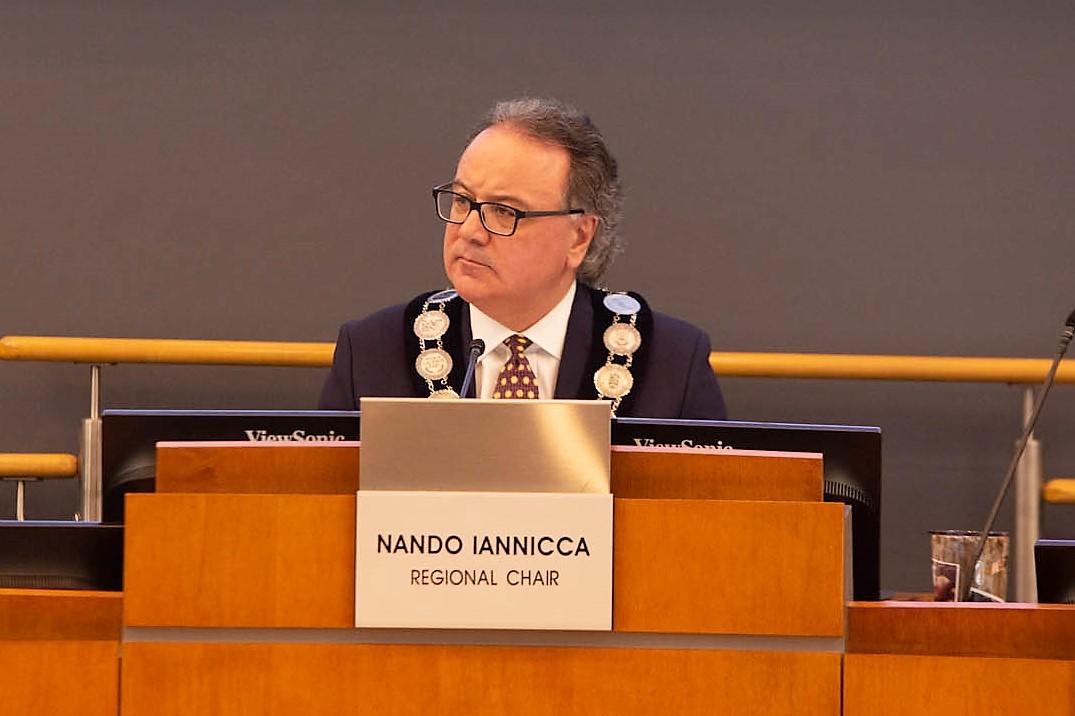
But if people like Damerla stay on the scene (here’s hoping she leaves for Queen’s Park) priorities such as affordable housing will likely continue to be ignored.
In Brampton, Brown is nearing the end of his honeymoon. Another tax freeze from him will be a clear signal that he isn’t concerned with the most pressing issues facing his adopted city, while elevating his popularity for the next phase of the redemption plan.
And at the region, well, the chair, Nando Iannicca, showed everyone how he views leadership. Don’t expect a man who behaved unethically toward his own city purely for political reasons, to suddenly find God and push for a responsible budget that, instead of having a politically convenient cap, actually serves the residents of Peel.
Submit a correction about this story


